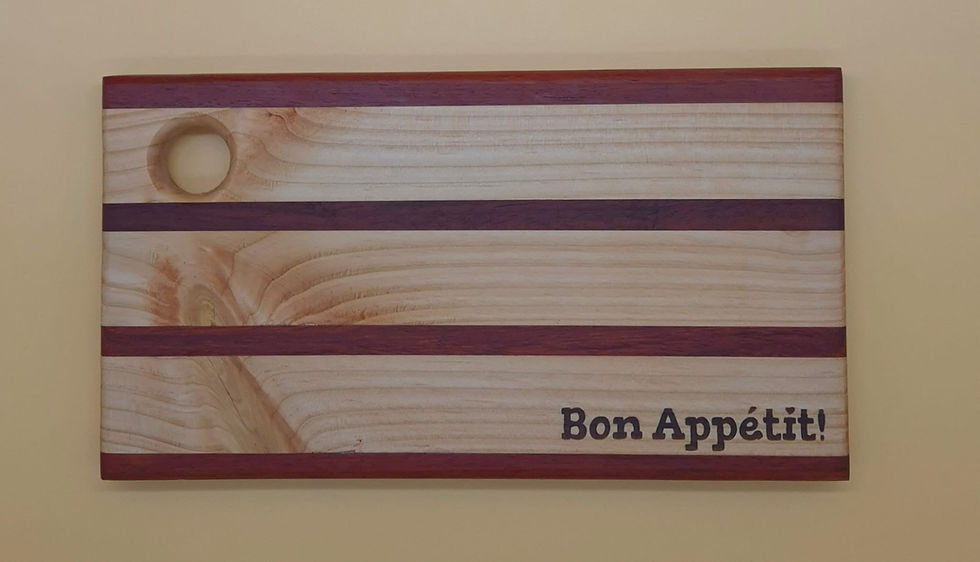In my last tutorial I created a Weather Station using Arduino and NodeMCU using DHT11 or DHT22 temperature and humidity sensor and displayed it using an OLED Display. In this tutorial, I am going create a Peg-Box using the same board but with a little bit of twist. In this setup, I am going to send the Temperature and Humidity readings to my Raspberry Pi based home server and store it in a MySQL database. The data can then be viewed using PHP and Google Charts, on a Mobile Phone or a PC connected to the home network. 3D Design

Lets look at the design of the peg-box. Using freely available pallet planks, I designed the body of the box. The pallet planks I am using are 160cm x 9cm x 2cm (length, width and thickness). So, the rest of the measurements will be based on that. The top bit of the peg-box will house the microcontroller and the sensors in it. Putting it on the top prevents the electronics from adverse climatic conditions. The back bit will stick to wall and hence we don't need to cover it up. You can either put the pegs straight in the front bin or throw it to the top bit, from where it will slide down to the front bin. The sliding design with an opening in the front will prevent rainwater from accumulating inside the bin. This mechanism will keep the bin dry throughout the year. Woodworking

Using 2 hammers I am dismantling the pallet. My aim is to reuse all the nails used in building this pallet so that, I can use them in building my project. After that, I sanded the pallet planks to give them a nice and smooth texture. Then using a chop-saw or a hand-saw I extracted all the pieces of wood required for building this project.

As mentioned earlier, my pallet plank are 9cm wide and hence, all the onscreen measurements are based on that. Final Assembly

Using wood-glue I am joining all pallet planks used in making the box. I got a bit too excited and accidentally deleted one of my recordings. So, I am using 3D animation to show you guys how I joined the two sides of the box. I used a plywood board to created the base of the bin. I glued few cylindrical wooden sticks on the roof of the box. To be very frank these sticks changed the entire outlook of the peg-box. Coloring

Since my aim is to install the peg-box outside the house, I have to make sure that I apply multiple coats of paint on the box to avoid the pallet wood from rotting. I applied 3 coats of paint on the entire setup and insulated all the holes that I found using wood putty.
So, this is how it looks like. The electronics bit will stay hidden under the roof of the box. Ha ha, Don't worry, I will obviously insulate them and make them weather-proof before installing them on the wall.
Installation

Now the next thing you need to do is to find a spot where you want to install this unit.
I am installing this near my clothesline, however you may want to install it in your pantry or behind a door or something like that. It totally depends on how much space you have and where you want to install it.
I am using metal frame hangers to hang this on the wall.
Place the unit against the wall, and using a pencil mark the points where you want to drilling the holes.
Now, using a hammer drill, drill the holes in the wall.
Then, put the wall plugs in the wall and then use a screw driver to install the screws.
Alright so, that's it. This unit is now all set to hold all my pegs in it.
Demo

So, this how my final setup looks like. Do comment and let me know if there are any scopes of improvement. Thanks
Thanks again for checking my post. I hope it helps you.
If you want to support me subscribe to my YouTube Channel: https://www.youtube.com/user/tarantula3
Blog Posts:
1. Peg Box
2. DHT11 & DHT22
3. OLED Tutorial
Video references:
1. Peg Box
2. DHT11 & DHT22
3. OLED Tutorial
Resources:
Gerber
Schema
3D Model
Code:
Code (Arduino + PHP + MySQL DB)
Code_With_OLED_Arduino
Code_With_OLED_NodeMCU
Code_With_PHP_NodeMCU
Libraries:
DHTStable.h
SSD1306.h
Adafruit display library
Adafruit GFX library
Support My Work:
BTC: 1M1PdxVxSTPLoMK91XnvEPksVuAa4J4dDp
LTC: MQFkVkWimYngMwp5SMuSbMP4ADStjysstm
DOGE: DDe7Fws24zf7acZevoT8uERnmisiHwR5st
ETH: 0x939aa4e13ecb4b46663c8017986abc0d204cde60
BAT: 0x939aa4e13ecb4b46663c8017986abc0d204cde60
LBC: bZ8ANEJFsd2MNFfpoxBhtFNPboh7PmD7M2
Thanks, ca again in my next tutorial.






















So cool! nice project @Ashish Adhikari
Beautifuly done! Thanks for sharing